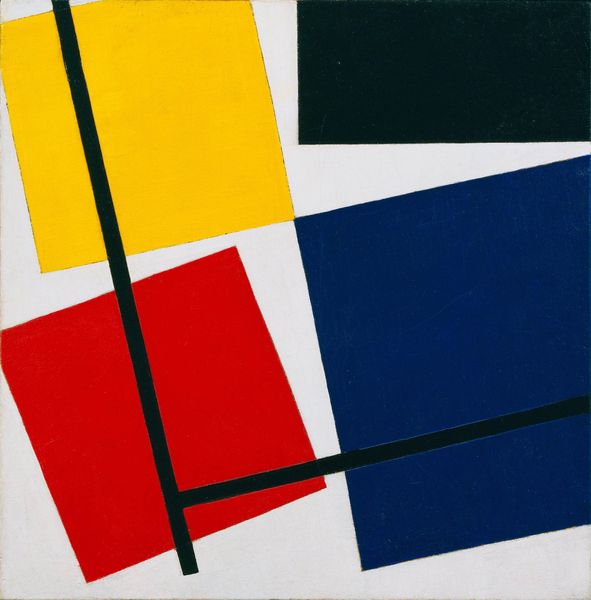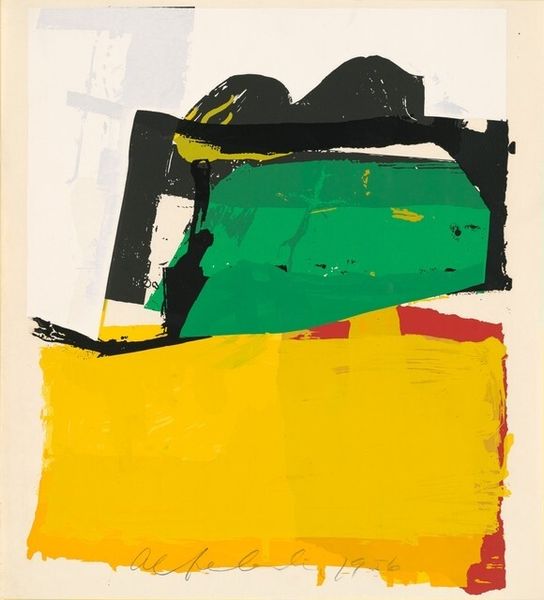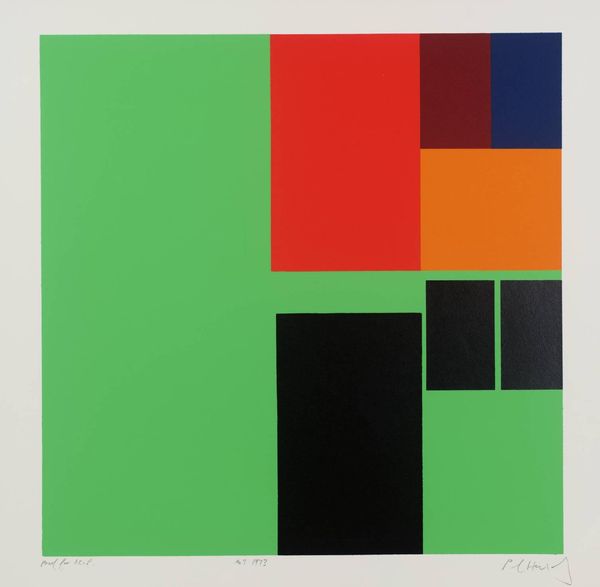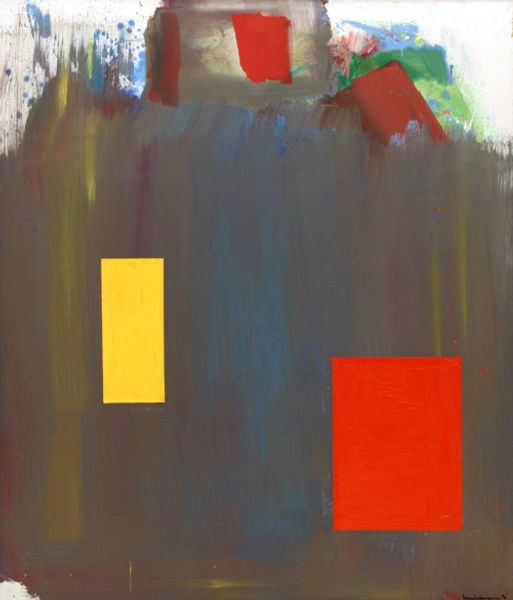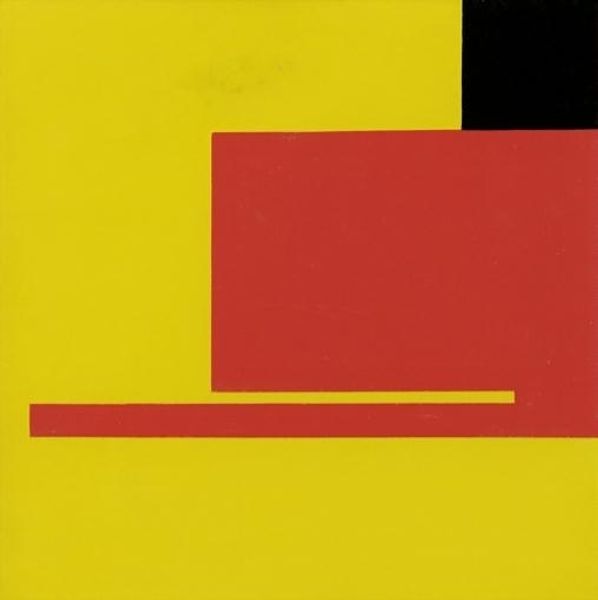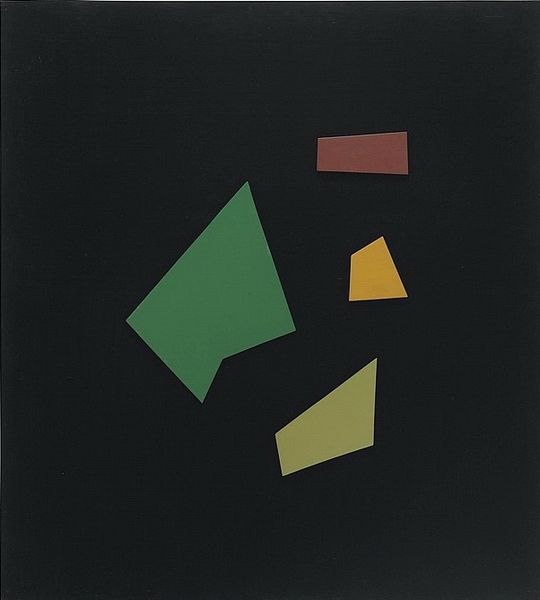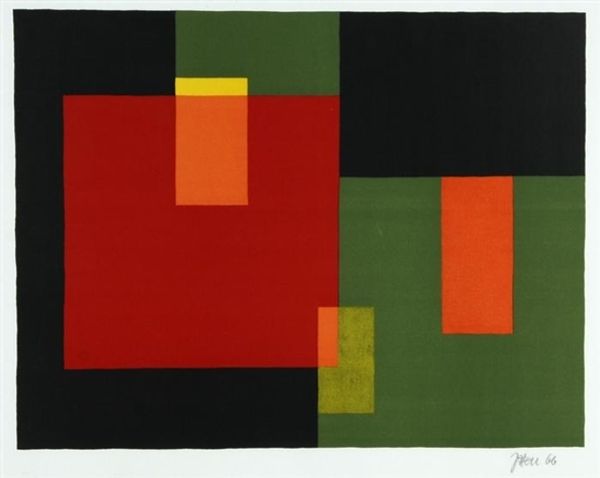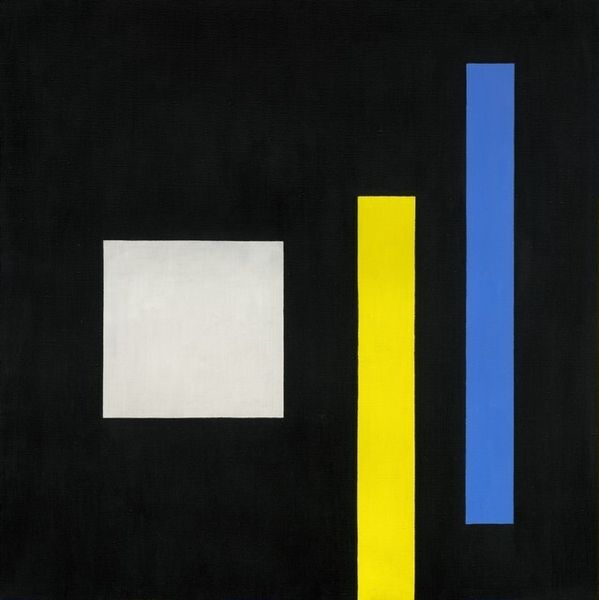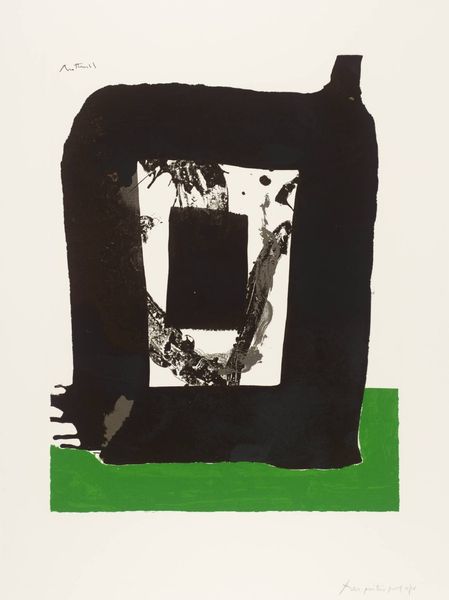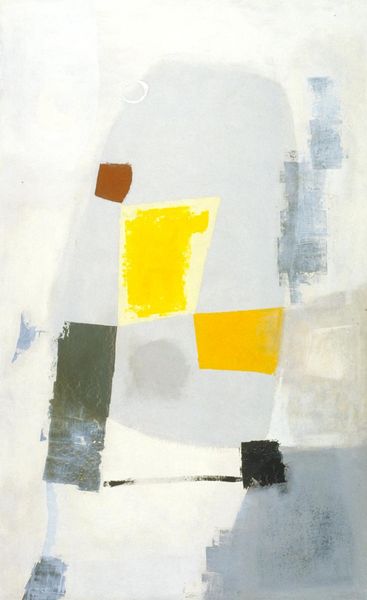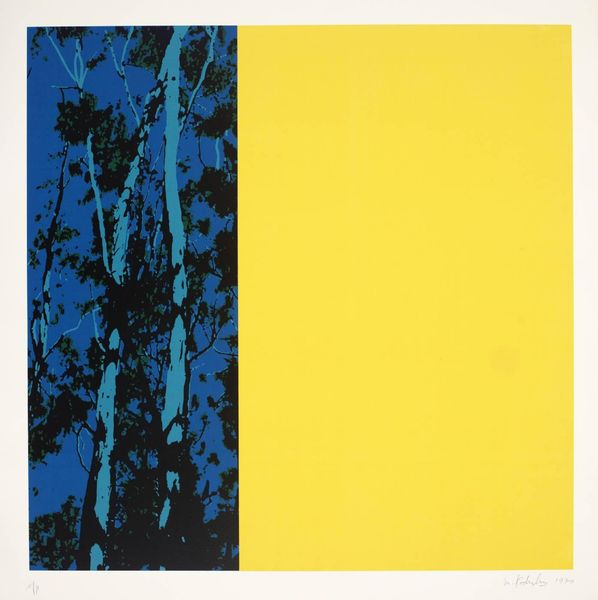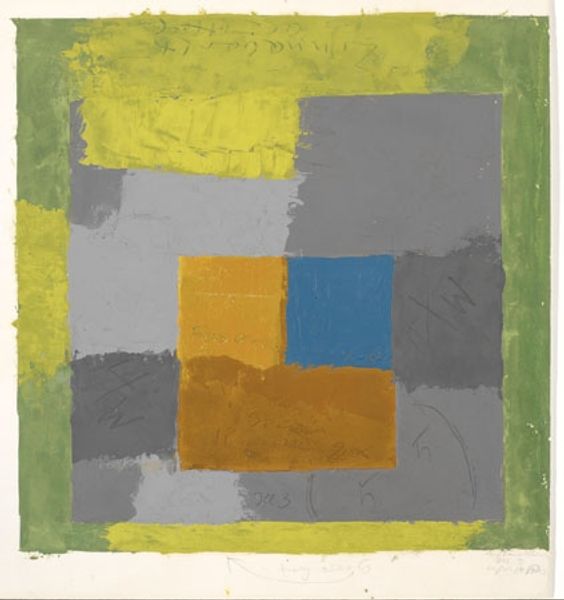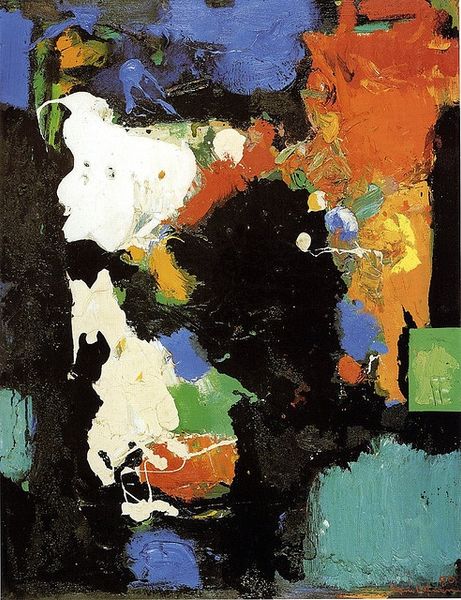
#
word art style
#
small typography
#
text art
#
incomplete sketchy
#
fan art
#
word art
#
fluid art
#
abstract font
#
paint stroke
#
experimental typography
Copyright: Hans Hofmann,Fair Use
Curator: Hans Hofmann's “To J.F.K. - A Thousand Roots Did Die With Thee,” created in 1963, immediately captures my attention with its stark visual language. The contrast between the bold shapes and gestural marks feels very present and impactful. Editor: It strikes me as quite mournful, despite the bright colours. The black feels heavy, like a shroud, overshadowing those rectangular forms of yellow and green. Almost like… a memory fading? Curator: Interesting point. Hofmann painted this immediately following Kennedy's assassination. What looks like simple abstraction speaks volumes about loss and the disruption of power, situated within the very fraught sociopolitical moment that the artist found himself. Editor: That context shifts everything, doesn't it? The black isn’t just a colour now, it's the weight of grief. Even the sketchy network of lines at the top of the canvas suggests a fractured society, struggling to rebuild. I wonder, was this exhibited widely at the time, and how did people react to it? Curator: Archival records show mixed responses initially, perhaps due to its challenging aesthetic. However, when we revisit it now, viewing it through the lens of trauma studies and considering the intersection of personal and national grief, the work’s significance deepens considerably. How do the yellow and green interact with the feeling of loss? Editor: It feels defiant, almost. Yellow as a symbol of optimism, green for enduring life. They refuse to be consumed by the darkness, clinging to the hope for a brighter future. Is it a traditional medium for him? Oil and canvas? Curator: Actually, it seems that it is oil on wood, which could suggest that there's a resilience, or desire for permanence in the creation. This diverges somewhat from the artist's typical, more expressionistic style, lending another dimension to the meaning we derive. Editor: This piece holds far more depth than initially meets the eye. It acts as a powerful testament to art's capacity to grapple with national tragedy on a deeply personal level. Curator: Indeed, its significance lies not just in the visual vocabulary but in its reflection of a wounded society searching for hope amidst the darkness of history.
Comments
No comments
Be the first to comment and join the conversation on the ultimate creative platform.
